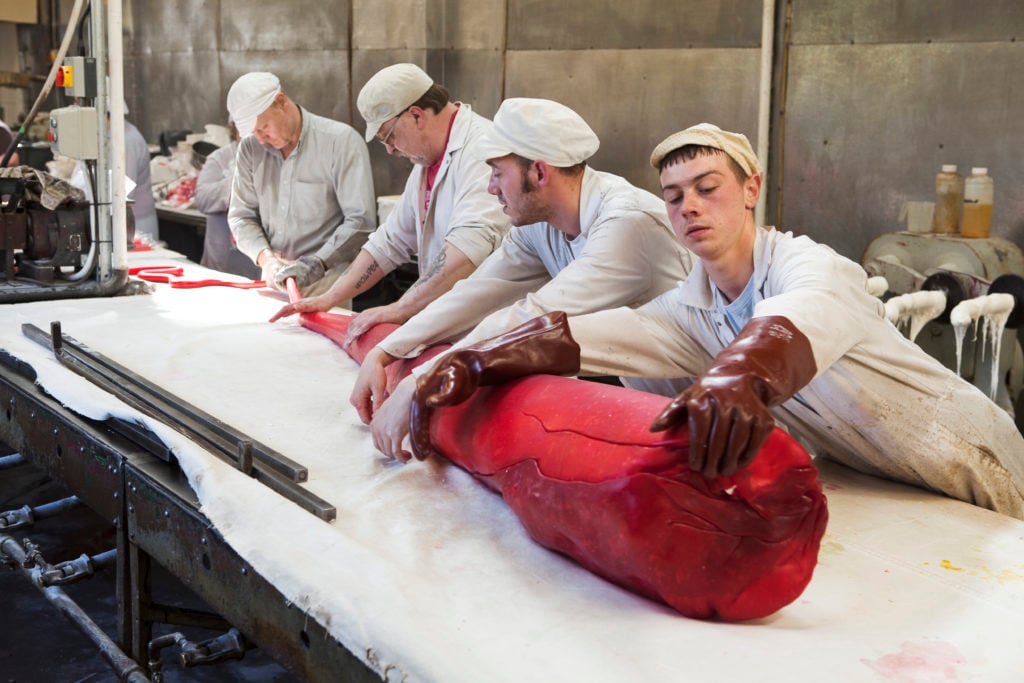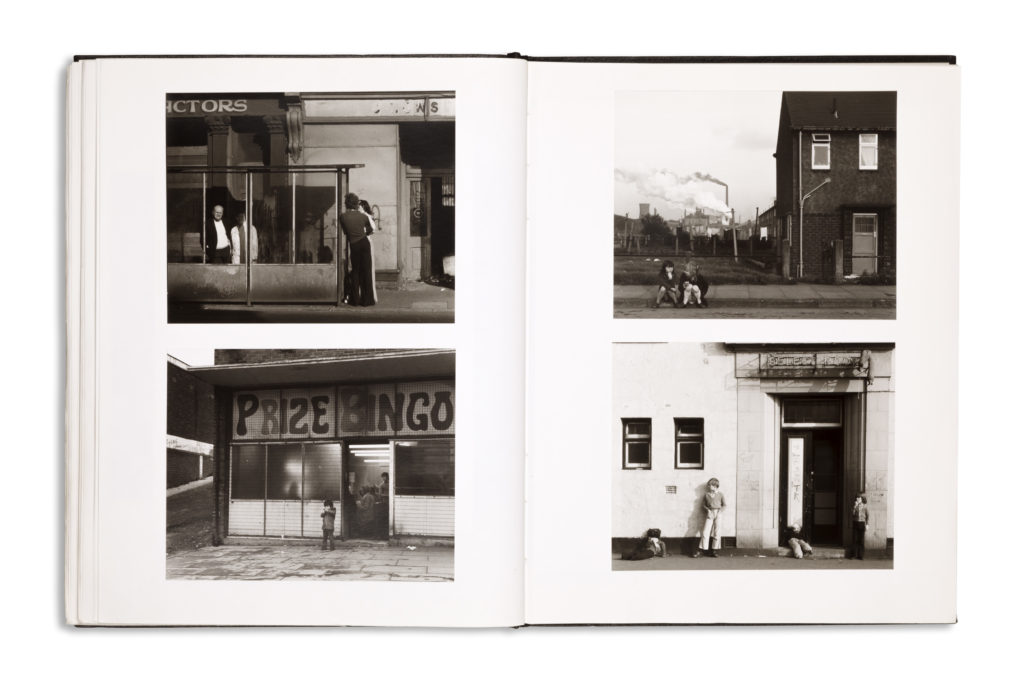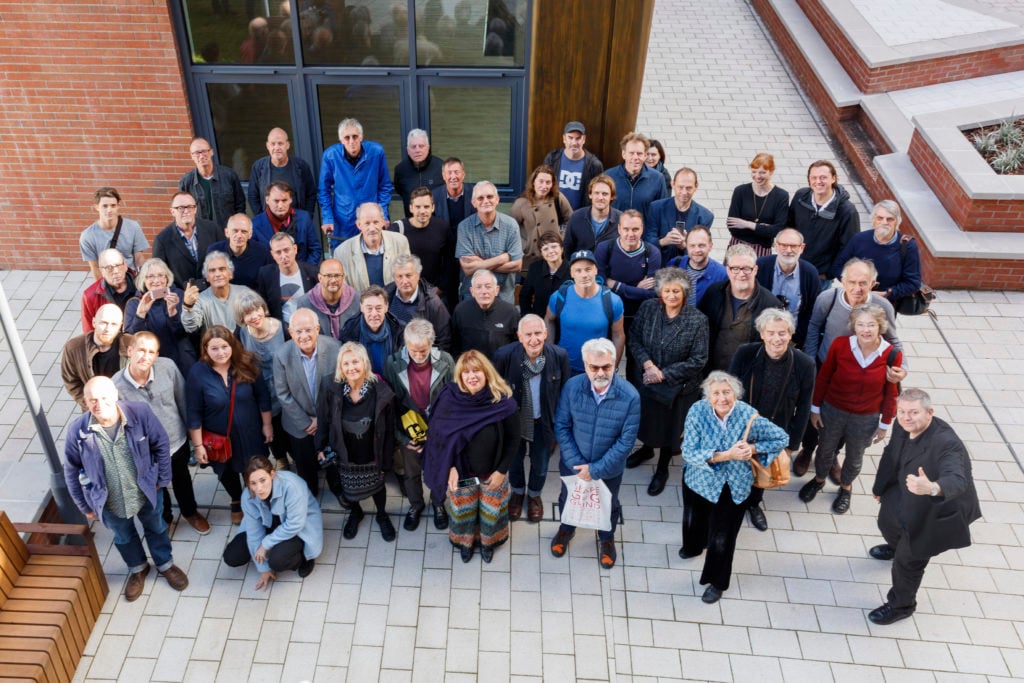Art World
The Photographer Martin Parr Has a New Foundation—and He’s Using It to Make Chris Killip Famous
The Magnum photographer will promote Britain's undervalued documentary photographers—but who will save their archives?

The Magnum photographer will promote Britain's undervalued documentary photographers—but who will save their archives?

Javier Pes

The Magnum photographer, curator, and prolific photobook collector Martin Parr has opened his foundation in Bristol to the public and researchers. Parr is now an archivist too—not just of his own work, but also of a lifetime’s work by fellow documentary photographer Chris Killip.
“In Britain, people think I’m dead,” Killip said at the launch conference on Saturday, October 21. But the Isle of Man-born Harvard professor of visual studies is working between four to 12 hours a day in the darkroom where he is printing, sometimes for the first time, images from his vast archive.
The Martin Parr Foundation will host Killip’s digital archive, which makes Bristol, in the west of England, the only place where researchers can study images he took more than three decades ago documenting isolated working class communities, first in the Isle of Man and then in the north of England. He also spent an intense few weeks photographing the anarcho-punks of Gateshead up-close and sweaty in 1985, he revealed, which will be the subject of his next photography book, The Station.

Chris Killip, In Flagrante, original book dummy, 1987
At the conference, Killip showed images from the book-in-progress of the punks and signed copies of his latest photobook, In Flagrante Two, which was published by Steidl this fall. The follow-up to the book that established Killip’s reputation in 1988, it also documents working class life in the north east of England in the late 1970s and early ’80s. The dummy of the original In Flagrante is in Parr’s collection.
There was a palpable feeling of “shelf envy” among the documentary photographers in the audience, which included leading photographers such as David Hurn, Markéta Luskačová, and Paul Trevor. The archives of the majority of UK documentary photographers, like their contemporaries in the US, face an uncertain future. Many photographers now in their 70s or older fear that preserving their legacies will be an unfair burden on their families. Some suspect their archives are destined for the skip and landfill. Killip shared their fears, saying he is sometimes tempted to choose a few thousand images “and burn the rest.”

A clique of photographers help launch of the Martin Parr Foundation. Photo by Louis Little
Among the speakers at the conference was Frances Morris, the director of London’s Tate Modern, which appointed its first photography curator, Simon Baker, in 2009. Art historian Kate Bush joined Tate Britain last week as its first photography curator.
Morris said that it was “an amazing moment to reconnect” with images taken by photographers in 1970s and ’80s, but could offer no space at the Tate to house their archives. Nor could Brett Rogers, the longstanding director of London’s Photographers’ Gallery. Her hope that rich, philanthropic collectors would step forward was called a “fantasy” by a member of the audience, who thought that only photographers themselves would find a solution—”or there will be a lot of skips needed.”

Martin Parr, A St George’s Day Parade, Black Country Stories
Parr decided to “take the plunge” this year and open the foundation, which is run by a four-strong team, after his part-gift, part-sale of 12,000 international photobooks to the Tate. The acquisition, accounted at the end of September, was supported by Maya Hoffmann’s Luma Foundation with the Art Fund.
Magnum co-founder Henri Cartier-Bresson opened his foundation in Paris. But Parr was keen to set up his own three years ago in his home city of Bristol. Entirely self-funded, it houses Parr’s archive of nearly half a million prints and the more than 90 books he has published, plus 30 he has edited or co-edited. In addition, the foundation will collect prints and photobooks by British and Irish photographers who have been largely overlooked in their homelands as well as international photographers working in the UK.
After the inaugural exhibition of Parr’s own work, “Black Country Stories,” a project commissioned by Multistory, a community arts agency in Sandwell, the foundation will organize shows of other leading photographers. Next year, the foundation will show the work of Scottish-born, London-based Niall McDiarmid, followed by works from the collection created by fellow Magnum photographer David Hurn.